Genre: Action Developer: Appaloosa Interactive Publisher: Sega Enterprises Players: 1 Released: 2000
I have been a fan of the Ecco series for as long as I can recall. I remember the ads with the Jacques Cousteau character lamenting his crew’s remaining aboard their boat in order to play the first title, and I was wowed by the game’s realistic graphics. I had a Game Gear, and despite the simpler hardware and limitations in visuals and sound, Ecco’s feel and atmosphere were not watered down (apologies!). I played the superb MD outing and all other titles only relatively recently, and bizarrely, Defender of The Future before them on the PS2. I adore this game, and more so on the Dreamcast, as it just feels more “right” to play it on a Sega system.
Defender of the Future is a reimagined/rebooted story, though its roots are firmly established in the original canon both thematically and in gameplay structure, with several original twists. There are some nice nods to the older games, like jumping out of the water at the request of a friendly whale to kick off the whole adventure. We have the staples of Ecco’s universe: Aliens, glyphs, time travel, an absence of humankind, though the latter issue is addressed more specifically here. The story, though with some holes and questionable specifics, is brilliant. “The Foe” is an alien race and enemy to both humankind and dolphins, who share an alliance based on peace, fellowship and interstellar exploration. Whilst a battle between the two sides ensues in space, Ecco remains on Earth and becomes the only one who can stop the Foe’s invasion, after they succeed in weakening Earth’s defenses. They open a portal in time and travel back to the moment when dolphins revealed their sentience to humans (like in Star Trek: First Contact) and alter history by stealing the traits that make dolphins what they are. Ecco enters the time vortex (stay with me here!) and interferes with this process, and the traits (somehow in the form of globes of some kind) are scattered throughout time. As the dolphins lose various aspects of themselves, so their relationship with humanity changes, bringing about three alternate and vastly different realities that Ecco traverses, each with a different feel and objectives that Ecco must accomplish in order to bring his own reality to fruition once again.
Each section of the game takes place around a volcanic looking island, and goal is to travel to the top where there is a final confrontation or revelation. It’s a nice structural feature that keeps you engaged with the idea of being in the same place but in a different reality. There is a fourth, shorter episode after the main bulk of the game that reminds me a lot of the ending part of Ecco’s second outing in The Tides of Time, in which the alien adversaries have invaded Earth. It’s real science fiction with the exploration of some themes that are engaging and interesting despite not being particularly groundbreaking.
We’ve all seen aliens and time travel before, but with the graphical and artistic presentation on offer here the alternate realities through which Ecco must explore and fight look, sound, and most importantly, feel great. The graphics hold up to scrutiny even by today’s standards, with Ecco and his fellow denizens animating fluidly and with great believability, albeit with the odd exception here and there: The giant octopus’s tentacles look a bit stiff for example, and the Foe queen has not aged terribly well in some respects. The texture work is lovely to look at, with lush and vibrant seascapes and underwater rock formations that shimmer from the waves above, and it goes a long way in hiding the, by more modern standards, low poly models of the environments. There are some nice touches such as sand billowing around Ecco’s flukes as he swims across the seabed, as well as his reflection on the undersurface of the water. Schools of fish dart hither and thither among a plethora of other sea life and plants that sway in the currents whilst sharks patrol menacingly. Bubbles emanate from corals and outcrops, all of which adding to the feeling of being immersed in the undersea world created here. There is a fair bit of fog which limits draw distance, which I imagine is due to technical limitations, but it does not detract from the beauty and also even adds to the realism in many ways: The viewing distance under water actually looks like this in reality, and stages set in the grim environs of the “Man’s Nightmare” chapter of the game make reference to the water being foul and actually benefit artistically from this feature. The way in which submerged structures are revealed through the murky depths looks eerie as you swim to discover them. Where the graphics engine falls short is when Ecco leaps out of the water; here the limited draw distance looks out of place, mainly when in open spaces. This is particularly noticeable in the “Hanging Water” stages (a nice homage to the “Sky Tubes” from The Tides of Time). Despite these limitations, the graphics are fantastic both artistically and technically, for the most part.
The controls are good, but as I find with many titles on the machine, the Dreamcast controller can be a bit of a hindrance. You pulse and then hold the A button to pump Ecco’s tail and maintain your cruise speed which works well, with the X and B buttons used for sonar and dashing respectively. An echolocation map of your surroundings can be enabled using the sonar button as in previous titles. It is implemented well, as I found it handy on several occasions when I lost my bearings. The analogue stick moves Ecco around and feels responsive and smooth. To bring Ecco to a halt you hold the Y button (a multi-functional key) whilst pulling back. Once he’s stationary, this combination allows Ecco to swim slowly backwards. Holding this button with the triggers pressed makes Ecco barrel roll left or right, which seems mainly for effect, as I never found much use for this in a practical way. Y and up performs a defensive spin move, which I also never really used. You can rotate Ecco’s view around him in a fashion like that used in Panzer Dragoon, using the triggers alone. If preferred, you can assign the trigger and Y button combination to the barrel rolling instead. This all feels a little janky at times, and I wonder if it might have been better to implement a half trigger press to roll Ecco with a full press rotating the view perhaps.
The D pad gives us two camera options: The first in the vein of Tomb Raider, the second being of not much use in my opinion, with there being a delay in the camera’s tracking of Ecco. Some may like this, but I feel that the camera should have been set to the first option alone, allowing use of the D pad for other things like locking on to certain items you need to catch or interact with, which can be a little tedious at times. There are odd walls/areas where Ecco can get stuck, and I have seen sharks swimming inside rocks occasionally, among other glitches here and there. Leaping out of the water is fun and allows you, for no other reason than fun, to twist, roll and somersault like a real dolphin, holding the dash button makes your aerobatics spin faster should you so desire. You can even tail walk, which can be useful if exploring caves. Pressing the sonar button whilst in the air makes Ecco chatter like Flipper, which is a nice touch.
The sound effects are what they should be: immersive and environmentally appropriate. Everything does what it should without too much fanfare. For instance, depending on Ecco’s angle when he hits the water, a different splash sound is made, adding to the realism subtly and significantly. You can also feel Ecco’s weight as he reenters the sea by this clever use of sound. I quite like the subtle moans and growls the sharks make, however unrealistic; they add a little more depth to them and help you keep track of their movements (they growl as they are about to bite). The same sound effect is applied to the more alien creatures as well, however, which is a little disappointing.
The music shines overall. It accompanies the environments perfectly and helps with the immersion that the graphical art direction sets, echoing the tone of the story at its various stages by utilizing different styles. The first, more tranquil stages have a new age Enya-like feel that convey peacefulness, mystery and adventure with hints of danger where appropriate, rather like the 16-bit days. “Man’s Nightmare” (my favorite segment of the game) has a melancholy, eerie and lonely orchestral feel that creates a mournful atmosphere. The “Anguish of Dearth” part of the game has a menacing foreboding flavor, with some truly memorable scores. There are many good intermission and movie segment accompaniments too, all narrated by the iconic Tom Baker, with his deep and charismatic voice in fine form. There is some recycling of music across the levels, and some tracks are quite short. I imagine this to be a space saving feature of the GD format, and is the only drawback to the musical presentation.
Where the game loses major points is in its obtuse nature; it can be maddening at times and you can spend ages on a level that feels unfairly difficult only to find that you were trying to coerce the wrong animal or have swum past the tiny door a million times. There are several annoying bits of poor game design that let down the whole thing. It’s not as if the whole ship was spoiled for a ha’porth of tar, but a little more polish here and there would have made a very good game almost perfect. Again, a little bit like the 16-bit days of the series.
I would score this game a ten because I love it dearly and can forgive its flaws (which are noteworthy) because of the way it makes me feel when I play it. To be fair, however, and from the perspective of the average person, I would score it between a seven and an eight. So, because I got so much from it personally, and still love to play it through every now and then, I’m going with the higher number, though anyone scoring it seven would be giving it a fair mark as well. In all, a must own game for the Dreamcast.
SCORE: 8 out of 10

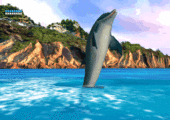
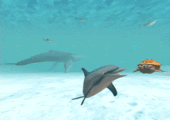
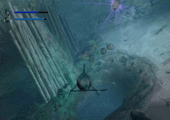
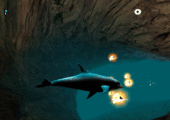
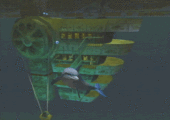

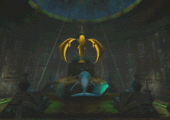
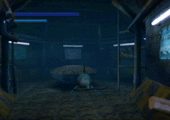
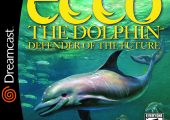
Recent Comments